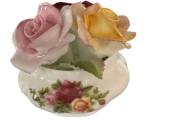Label, the milkman would then deliver the jugs while on his regular route. Those with the bullets he placed at the right side of the front door. Those with only milk on the left. Homeowners placed empty ones on the ground in front of their huts to be brought back and refilled.
Residents in the shtetl were under no misconception. They were fully aware that any attempt on their part to fight back against the invaders would be met with increased violence. However, being able to display any form of resistance would help restore a much-needed sense of self-worth.
Girsha, seeing how successful the milk jugs were as containers for munitions, soon began using them for the liquor he distilled in his basement. This too went undetected by the authorities.
The milk jug’s potential had still not been fully realised. Yet another creative use was found. The transportation and distribution of counterfeit coins. This trade began innocently enough when a group of teenagers in the shtetl grew bored and looked to do something exciting.
Counterfeiting, in general, was rampant in Russia during the 1840’s and 1850’s, but was concentrated in banknotes. The Minister of Finance continually urged authorities across the country to crack down on this threat to the financial stability of the country.
The teenagers in Girsha’s shtetl were not at that level. They were only interested in producing fake coins – 10 and 25 kopeks, which would enable them to buy goods at the local marketplace. Any change they received would be in legitimate coins and they would then have both the goods and clean money. They convinced an adult in the shtetl to rent a small house for them supposedly as a place of study. Then they asked Mayer, the silversmith’s son to “borrow” a mold for making coins. One of their group was sent to purchase an amount of tin, as well as buttons from discarded soldiers’ uniforms, all of which they melted into raw material for coins. When everything was in place, they convinced Ekler, a qualified coppersmith to train them in the manufacturing of the coins.
After they had produced a good amount, they would hide them – In milk jugs, completely covered by milk in case the lid was lifted. Coins were delivered this way as far away as Kiev and used in the marketplaces of almost every village. One time when a policeman became suspicious of all the goods they had bought, they were able to bribe him – with a false coin. Once again, milk jugs proved to be useful.
With so much activity, the need for milk jugs increased dramatically and Girsha was only too happy to meet the demand.
Becky, our milk jug was never out of Girsha’s sight and when the family decided that his son Nathan would emigrate to Canada, Girsha insisted that he take it with him. That way a part of the shtetl would always be with him.
It traveled from Loyev, down the Dieppe River, across the Black Sea and the Atlantic Ocean to Liverpool. Then finally to Quebec City and Montreal where Nathan eventually settled and raised a family.
Now it sits on our dining room table as a link between four generations.





